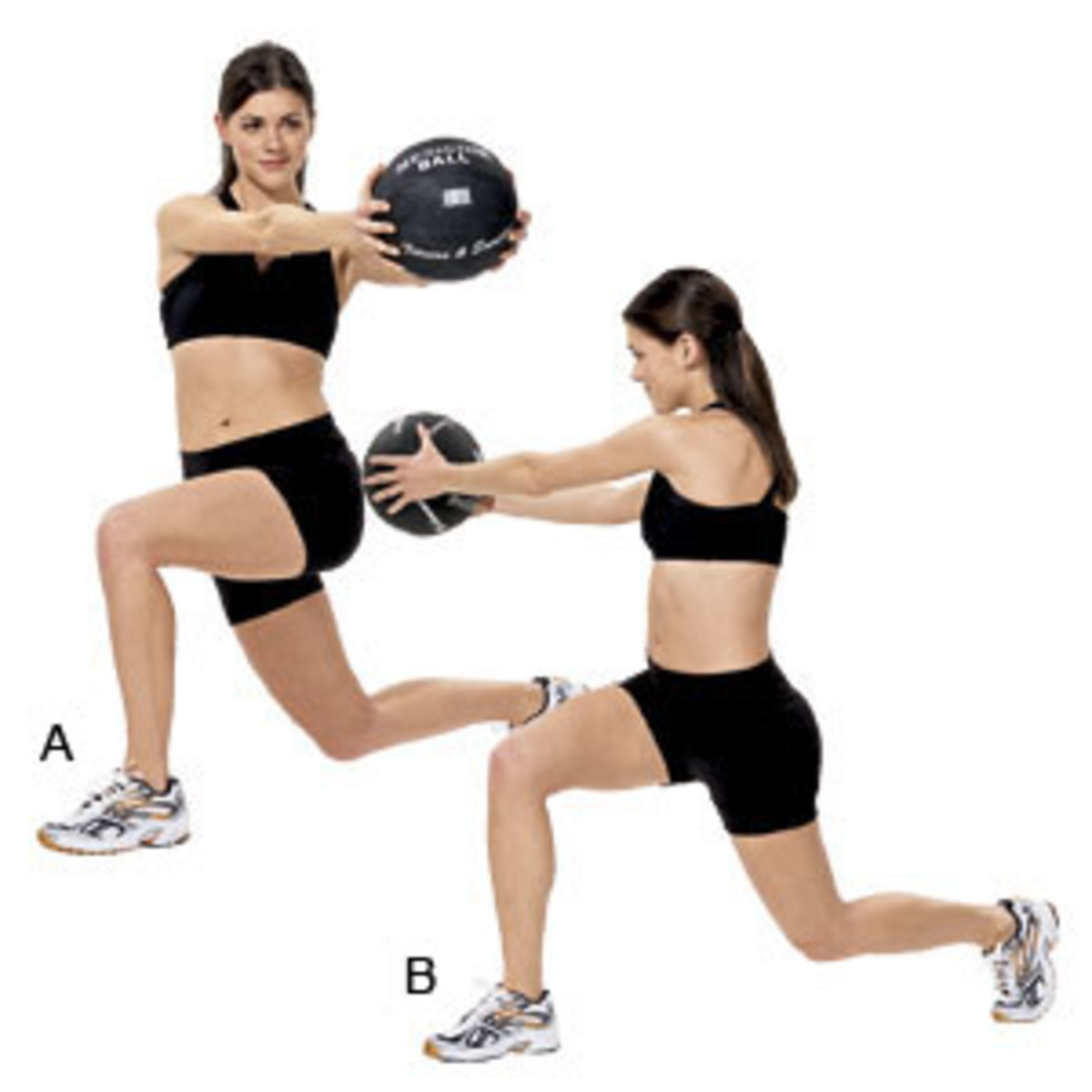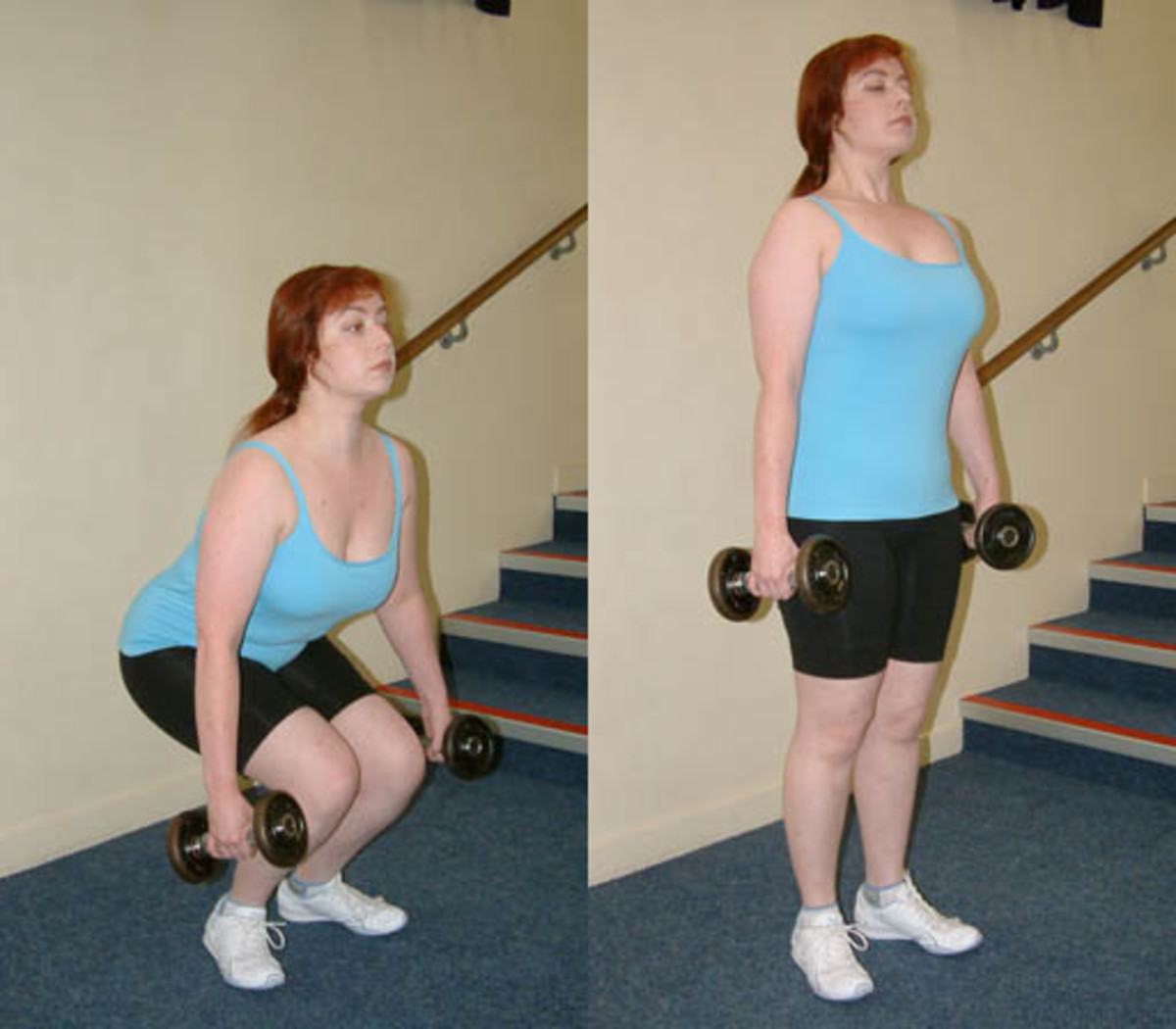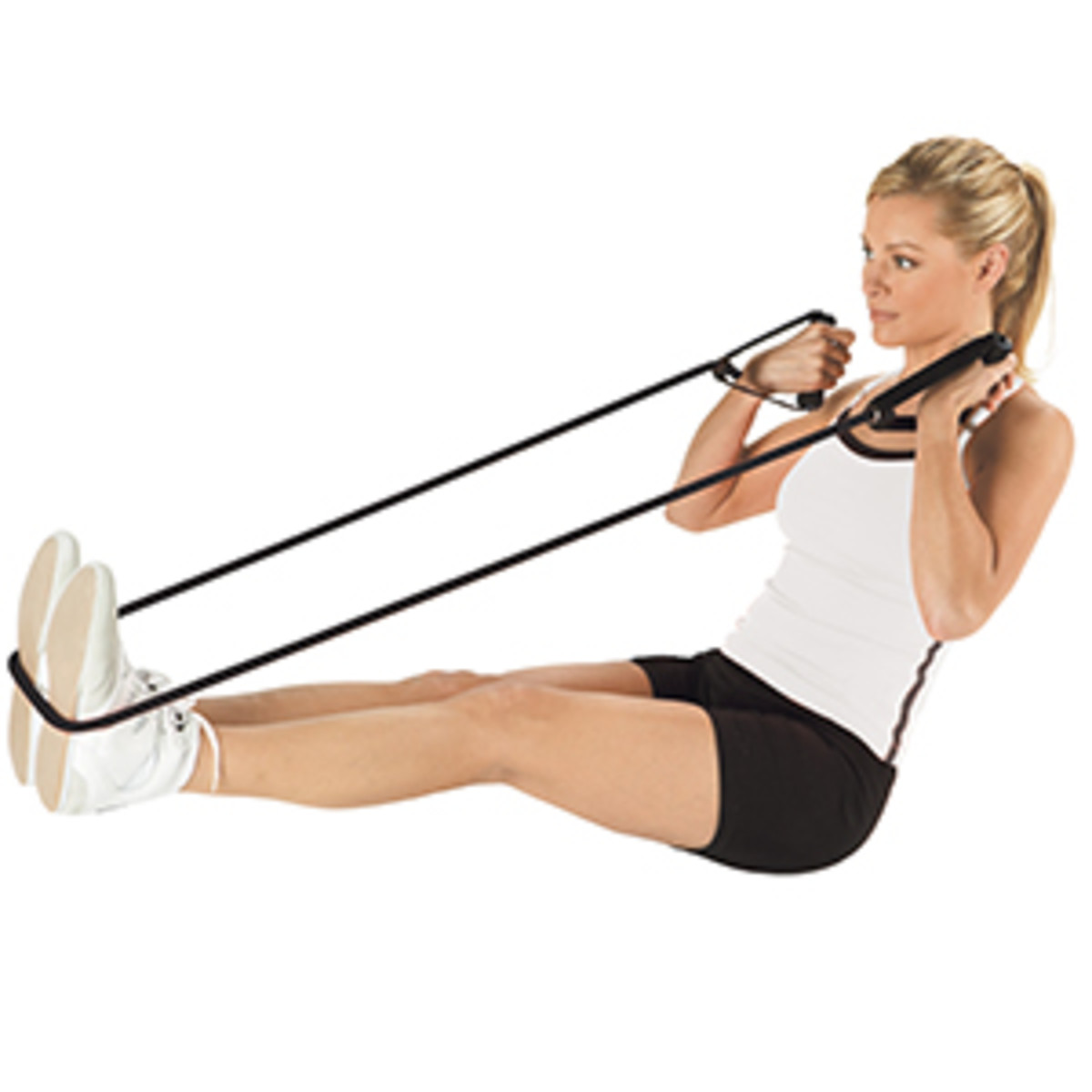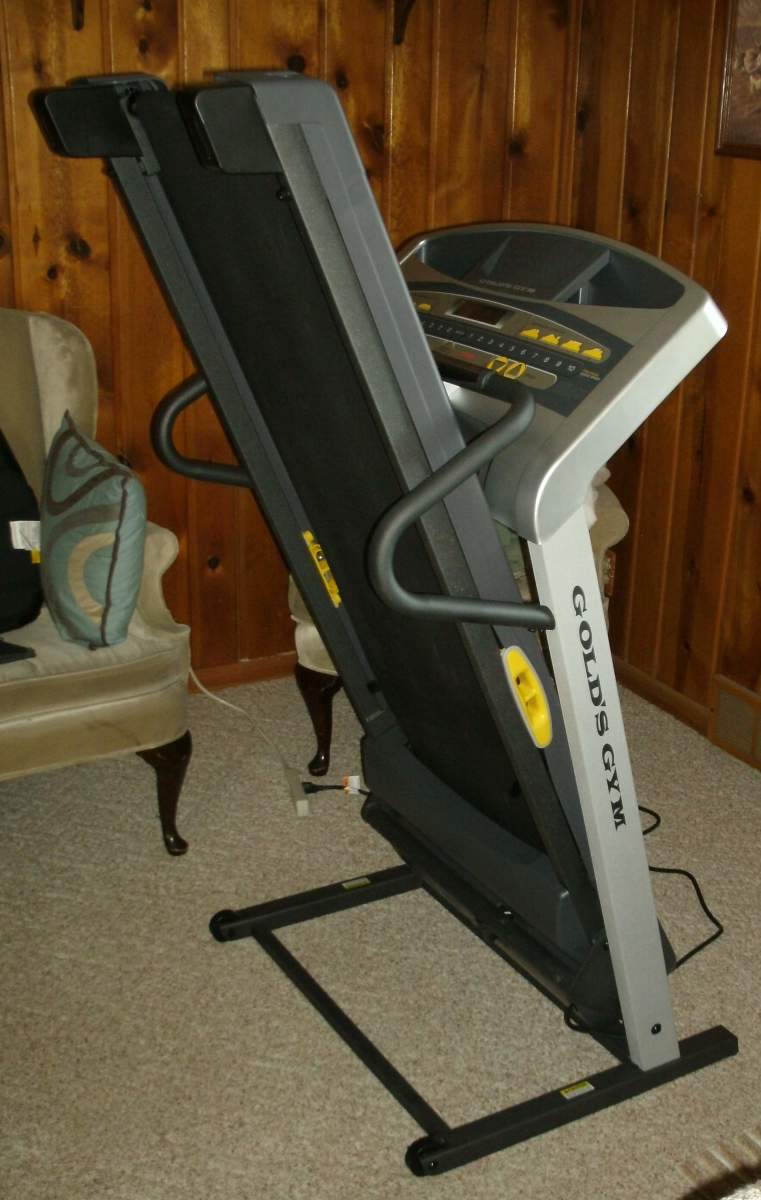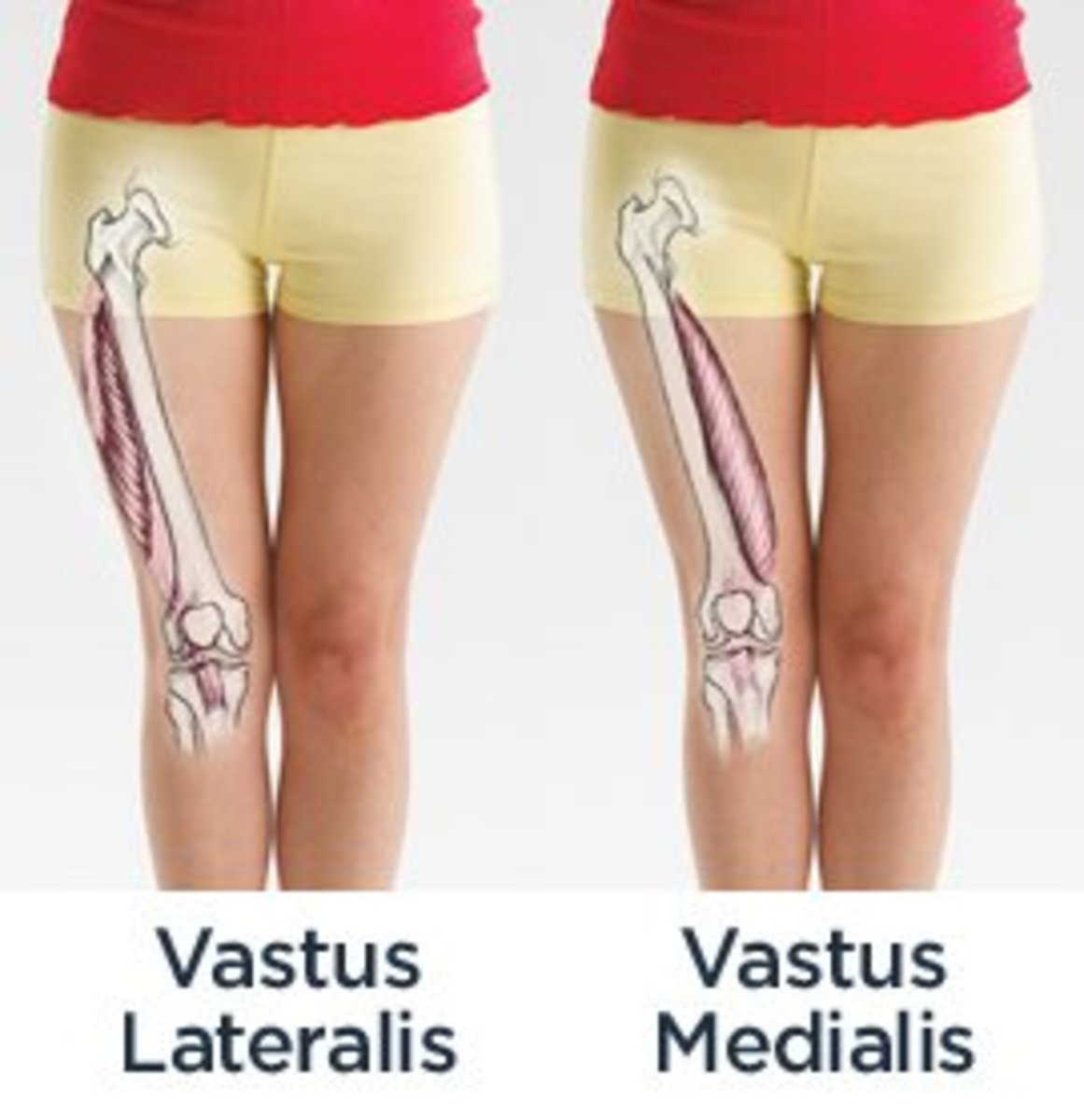A Review of the P90X Program

I'm a fitness nut.
The first time I set foot in a gym, I was fifteen, and it was love at first lift.
Now, sixteen years later, I've tried just about everything that isn't a group sport. (And that only because I don't play well with others.)
I've worked out at the gym and at home. I've worked at the gym just for the free membership. I've attended several gyms over the years and tried most of the group exercises they had to offer, including circuit training, step, boot camp, yoga, pilates, spinning, and kickboxing. I've worked with personal trainers and without.
I've run thirty miles a week and biked more, and when my doctor told me to stop for the sake of my knees, I switched to ellipticals and rowing machines.
I've suffered sprains, strains, bruises, and once managed to bang my shin into a weight tree so hard that now, eight years later, I still have the hole in my leg.
I've had six packs and lost them. I've driven myself hard and slacked off just as hard. I've tried things that worked, things that didn't, and things that left me wondering what on earth had possessed me to try them in the first place.
All of this is to say that I've done a lot of nutty things in the name of fitness, and I've accumulated a good working library of knowledge of what works - and what doesn't.
I've also recently started on my third round of P90X, which despite its faults and gimmicks (and it does have plenty of those) is deserving of a review of its very own.
My hope is that, in offering a review of P90X from the perspective of a self-confessed fitness nut, I can give you some valuable insights into the program, such as what it is, how it works, and whether it might, even if you're not a fitness nut like me, work for you.
What is P90X?
P90X is a 90-day workout program designed by personal trainer to the stars and loveable goofball Tony Horton.
About Tony Horton:
Tony Horton has large muscles, extremely white teeth, and an enthusiasm for fitness which borders on the maniacal.
In other words, he's probably the perfect personal trainer.
His P90X program is the so-called "extreme" version of his first home workout program, the Power 90 In-Home Boot Camp (or P90). Thus the 'X'. Yeah, it's a gimmicky name, but that's Tony Horton for you.
The program is marketed towards people who are not entirely new to exercising and would like a more challenging home workout than what's currently on the market. You don't have to be in perfect shape to get through it, but you do have to have a clean bill of health from your doctor, and if you're new to fitness I'd strongly recommend trying out the base verson, P90, before moving on to P90X.
In brief, the program will have you exercising six days a week for thirteen weeks, which will consist of ten "active" weeks broken up by three "rest" weeks.
There are three versions of P90X: Classic, Lean, and Doubles.
During the active weeks of the Classic version, you will go through three days of strength training, one day of high-impact plyometrics or "jump" training, one day of "Kenpo" which is essentially a kickboxing workout, one day of yoga, and one optional day of stretching. Each workout will last one hour, with the exception of yoga, which will last one and a half. There will also be a fifteen-minute ab workout meant to be done after each strength training workout, though you can do that at any time on the same day.
Plyometrics is considered the worst of them all, since it's an incredibly high-intensity and high-impact cardio workout. If you don't think you're up to that, don't worry: Tony includes an alternative "Cardio X" workout which is much lighter and is designed to as a substitute for those whose knees aren't quite up to all of that bouncing.
During the rest weeks, expect more yoga, more Kenpo or Cardio, some stretching, and a core strengthening workout called Core Synergistics.
The "Lean" version essentially lightens up on the strength training, swaps Cardio X for Plyometrics, and is recommended for people who want to lose weight. Personally, I think anyone who wants to lose weight is better off building muscle for more calorie burning throughout the day rather than sacrificing strength training for cardio. However, the choice is entirely up to you.
The "Doubles" version is for masochists, and basically tacks a three to four extra Cardio X workouts every week. I, fitness nut that I am, am not nutty enough to do that. You may, but you'd better be in good shape and eating plenty of food, because otherwise you will run into trouble.
Last but not least, it's worth mentioning that P90X is at least ostensibly based on a concept they refer to as "muscle confusion".
More on that later.
What equipment will I need? (Really.)
A lot of things get marketing along with P90X, and hey, who can blame them? They have to make a living.
However, all you really, absolutely need is:
1) A set of good quality resistance bands in light, medium, and heavy resistance. Be wary of any bands which are attached to their handles with a plastic hook, as these hooks tend to break. (For example, these bands are highly reviewed at Amazon, not too terribly expensive, and come with a manufacturer's lifetime guarantee.)
2) A pair of comfortable sneakers with good shock absorption.
If you'd like to go a little bit further, I would add:
3) A set of dumbbells. The bands will do in a pinch, but a set of dumbbells in varying weights will allow you more flexibility and probably more weight. It's also a matter of personal preference. Resistance bands will offer more resistance the more they stretch, whereas dumbbells will offer constant resistance. I personally prefer the latter, whereas you may not. Experiment and find out. If you do prefer dumbbells, I would recommend that women start with a set of two each of 5, 8, 10, 12, and 15lb dumbbells. Men might want to start a little higher, with 10, 12, 15, 20, and 25lb dumbbells. If you're already stronger than that, well, keep going up!
4) A pull-up bar. You will be shown alternatives moves with resistance bands, but really, there's no substitute for a pull-up. Pull-ups work your entire back as well as your arms and core in a way that no other things, even lat pulldowns (which mimic the motion) do.
The most common and easiest pull-up bars to install are the door-mounted bars, such as this one, which anchor over the door frame and can easily be removed if you live in a rental home. Check the load ratings, but most of them will hold up to 200 lbs, and some will go even farther. You can also search for wall- or rafter-mounted bars, if you don't have a handy doorframe or would rather have something drilled into a solid chunk of wood.
And that's pretty much all.
If you'd like to go farther, however, you can add:
5) A yoga mat, which will allow you to comfortably do the floor segments of Yoga X. A folded-up towel can substitute in some ways, as can a carpeted floor. However, carpet often offers less grip, and in any case yoga mats are usually washable in case you end up sweating all over them. Your carpet may be rather less so.
6) A yoga block. If you're not that flexible a person, this will help you with some tougher moves by allowing you to modify them. (Tony will show you how.) And if you are more flexible, there are ways in which the block can extend some moves and give you even more of a stretch.
And that's about it.
Don't even bother with the P90X-certified shakes and supplements. Stick to lean protein sources like chicken, fish, pork, and lean beef. (Or, if you're a vegetarian, beans, eggs, tofu, and cheese.)
If you do want to try protein shakes in order to get more protein in your diet, look for those made with whey protein isolates, which have a good bioavailability. (In other words, your body will actually absorb more of it.) I personally have gotten good results from and heard positive things about Gold Standard brand whey, but whatever you use, make sure to read plenty of reviews about it first.
Wait: what's this muscle confusion thing about?
Glad you asked.
Muscle confusion is a concept which maintains that if you change your workouts very often – usually on a weekly or biweekly basis - you can avoid reaching the dreaded “fitness plateau”.
A fitness plateau is a period when you stop making forward progress in your training. There are several ways to avoid it, and changing your workout is one of them. (So is checking your diet to make sure you’re eating enough protein and making sure to lighten up on intensity for one week every four to six weeks to give your body the opportunity to recover and repair itself from the strain you’re putting it under.)
Muscle confusion should supposedly short-circuit this entire process by preventing your body from adapting to your workout.
There are a few problems with this.
One of them is that, in reality, adaptation is good.
Adaptation is good because it’s what allows your body to build muscle in the first place. As you repeatedly overload the muscles, either through lifting heavy weights or doing endurance training, they are stimulated to not only repair any microscopic wear and tear but to synthesize more muscle tissue so that you can perform better next time.
However, the body only builds a small amount of new muscle tissue after each workout. This means that the adaptation process is a long one, full of tiny cellular changes that add up to big, visible changes over time.
Before we go on, I’ll just sum all of that up again, for emphasis:
The body reacts to exercise by adapting to it. It adapts by building muscle in small increments. Adaptation is not an end state. It’s an ongoing process, and it happens each time you exercise.
Adaptation is not a bad thing which you must absolutely avoid. Adaptation, up until you are fully adapted and can adapt no more, is *good*.
With me so far? Great! Let’s move on.
The other, related problem with muscle confusion is that your body actually takes a long time to adapt to the same workout – anywhere from four weeks to three months, depending on your individual physiology, diet, and training intensity.
This all means that the adaptation process is so long that you arguably gain nothing by changing things up after only a week or two. It's just too early. Your body isn't far along enough towards full adaptation for the change to make a difference.
Not only that, but while you may even “confuse” your muscles by constantly cycling workouts, it’s not necessarily a good confusion.
For a tortured analogy, let's say that you're reading a book. Then let's say that, when you're a quarter of the way through, someone comes along, gives you another book, and tells you, "Stop reading that one. Try this one instead."
Now imagine that this gets repeated every time you got a quarter of the way through each new book.
You wouldn't actually be able to get the full benefit from any of those books. You probably wouldn't even understand the plot or the character arcs at all. You definitely don't know what happens at the end, because some joker kept stopping you before you could find out.
Muscle confusion is kind of like that, only with more sweating.
The last problem with muscle confusion is that, although it is true that you will need to change your workouts periodically in order to progress, it is not necessary to overhaul your workout each time. All that you need to do is change the intensity. Add weight or reps if you’re training for strength, and if you’re training for cardiovascular endurance, change speed or time.
And that’s it. That's all the change your body really needs.
If that doesn't work to break your plateau, look to your nutrition and to your recovery periods. After all, recovery is just as important as the exercise itself. Make sure to lighten up or take a week off from your normal routine entirely every four to six weeks, and make sure you're eating enough protein.
However, muscle confusion is not, in my opinion, a good solution to the plateau problem.
So if you don't like muscle confusion, why do you like P90X?
Simple:
Muscle confusion is one of P90X's two big marketing hooks. (The other, of course, is that it's a home workout program for fitness nuts.) After all, Tony Horton has to make a living, and he can't do that if he can't sell his program. I understand and appreciate that.
However, if you just look beyond the marketing gimmicks, there’s a lot of good, meaty stuff to P90X. It's not flawless, but then, few things are.
If you want to know what’s good about P90X, let's take my experience as an example:
Even fitness nuts get bored
I’m a longtime fitness nut, but even I can get bored with my routine and lose motivation.
P90X is many things, but what it isn’t is boring.
For one thing, it's challenging.
You can adjust the level of challenge to your fitness level, but that goes both ways, and if you really want to go all-out, Tony leaves you plenty of room to go all-out.
As for the workouts itself, they consists of a lot of basic, tried-and-true home workout moves, like push-ups and pull-ups. The only difference here is that it’s all put together for you in one complete package.
Of course, you can't base a 90 day, six-day-a-week workout on push-ups and pull-ups, so there's plenty of other stuff to do as well. Fortunately, while some of the other moves are complicated, none of them in this program are insane or unhealthy, and if there are any reasons to be cautious (such as certain moves being unwise for people with low back programs), Tony is generally good at saying so loud and clear and giving you alternatives.
The strength training routines are generally solid, with just a few exercises that are a little out-there. My only real dislike is the Shoulders and Arms workout, because an hour is way too long to spend doing bicep curls. I find that doing the big, compound motions (like push-ups) sculpts my arms just fine, and this particular workout is really overkill.
As for cardio, Plyometrics is an incredible workout and calorie burner, and I’ve continued doing it once a week even while not on the P90X program, just because I find that after I’ve done it regularly for a while I can bound up flights of stairs as if my legs are spring-loaded and my lungs are made of high tungsten steel.
Kenpo X isn't terribly exciting, and I'd like to try it with a punching bag so that I can get more resistance in my punches, but it goes by quickly enough and is easily adjustable for both beginners and old P90X fogies.
Yoga X is grueling, but it’s strangely fun and has given me great improvements in balance and flexibility. I trip over my own feet much less these days.
And, overall, P90X keeps me entertained when my interest is flagging, and is a complete enough workout program that I don’t feel like I’m missing out on any aspect of my fitness.
Exercising on the road is hard
As in really, really hard.
See, because I’m also on the road a lot, I sometimes struggle to keep up with a more traditional go-to-the-gym-and-lift-all-the-weights program. I just don’t have regular enough access to good equipment, and I tend to lose interest easily when I don’t have big, heavy weights to pick up and swing around.
Unfortunately, there are very few home workout videos out there which are designed for people who are already in reasonably good shape and need more of a challenge. If there are, they’re seldom arranged in such a structured program with such a clear outline of what to do and when to do it.
P90X provides that, and it does so without requiring lots of equipment. All I need to take with me are my DVDs, a few resistance bands, a good pair of sneakers, and some workout clothes, and I’m golden.
P90X deprives travelers of the, “My hotel doesn’t have a gym,” excuse, which is great for those of us who are often on the go.
Structure is its own motivation
Let’s face it:
Most people don’t have the time or inclination to research all that they need to know to design their own fitness program.
Most people just want to be told what workout to do to get results and when to do it. Then they just want to get it over with and go home.
There is nothing wrong with that.
P90X allows you to do this.
Each day of the 90-day plan is laid out for you. All you have to do is put the DVD in the player, press play, and do what Tony tells you.
Plus, since P90X is a 90 day program, you have a very concrete goal to shoot for:
Get through the 90 days successfully.
That's it. Survive three months, pat yourself on the back, take a week off, and then either jump back in or take your new and improved bod on to other things.
A goal like that is a great motivation. It’s easy to grasp, easy to see progress on, and it’s a short enough time frame that it doesn’t feel like you’ll be at this forever.
Tony Horton is a loveable goofball
You may occasionally want to hit him with something heavy, but Tony Horton, the brains and brawn behind P90X, is so encouraging and enthusiastic that you’d feel terrible about it afterwards.
He also gives lots of clear cues, plenty of pointers on form, and provides a ton of alternatives for most exercises. He’ll show you how to do the same thing with resistance bands and with dumbbells. He’ll also show you how to modify many exercises to make them either easier or harder. And many people do exactly that, using all of Tony's "easified" moves for the first 90 days and then graduating to the harder versions the second or third time around.
The community is supportive
With an active forum membership, regular newsletters, nutrition tips, recipes, and online workout logs, the P90X website at beachbody.com (the home of their parent publishing company) is surprisingly informative and full of supportive, friendly people. If you need advice, encouragement, or even to find a workout buddy, you can probably find it there.
So what's it worth, in the end?
One of P90X's main drawbacks is its pricetag. At a whopping $140 for the 12-DVD set, it's not as expensive as going to the gym but will certainly make your wallet whimper.
Neither did it change my life. I still don't have a six-pack, though I think I can blame that on drinking too many six-packs. I'm in pretty good shape, but I'm sure there are people out there who've never done P90X and are nevertheless in far better shape than I.
However, stripped of the marketing and with its flaws held to light, P90X is still a good, thorough home workout program which will:
- give you a good workout with very little equipment
- address some aspects of your fitness which you may have been overlooking
- remotivate you if you’ve become bored with your usual routine
- and provide you with a structured, easy-to-follow fitness regimen.
It also has a supportive community and a harmlessly insane instructor, which are nice bonuses.
Is it perfect? No. No workout program is perfect.
Would you be better off with something else? Yes, you might, especially if you want to build serious muscle.
However, as a high quality all-around fitness program and a way to cure your workout doldrums without investing in a gym membership, you could do worse than to turn to P90X.

